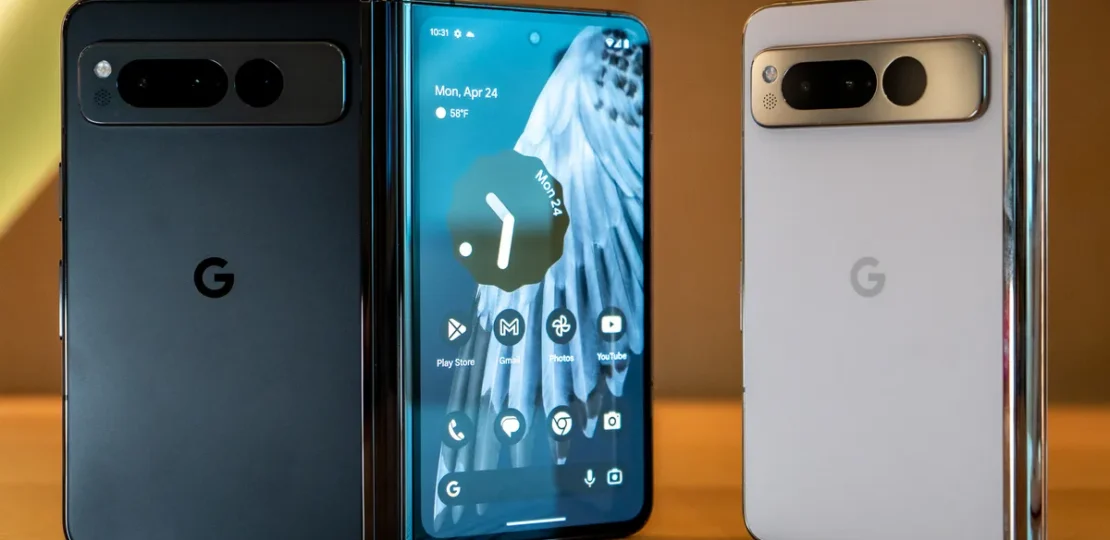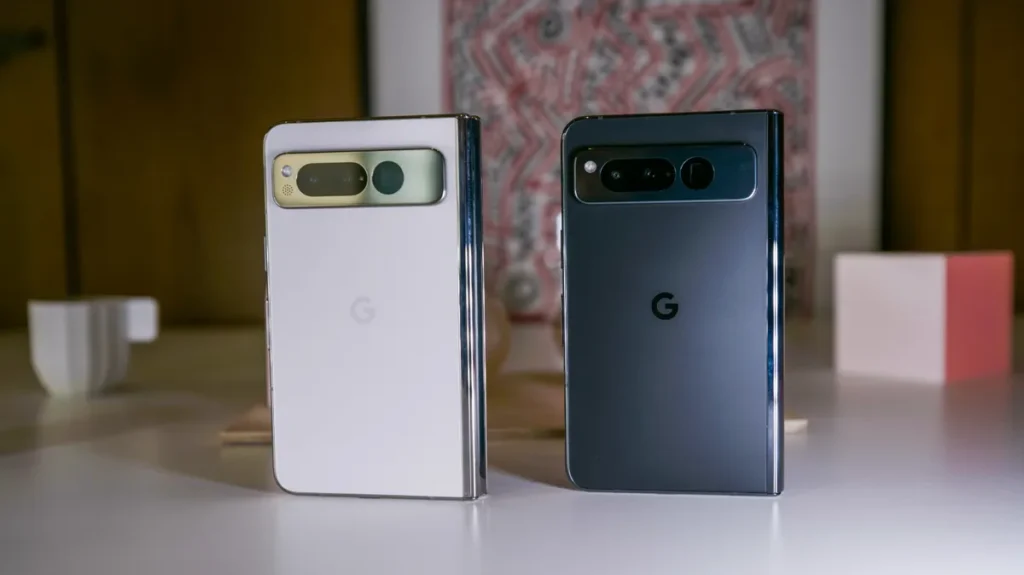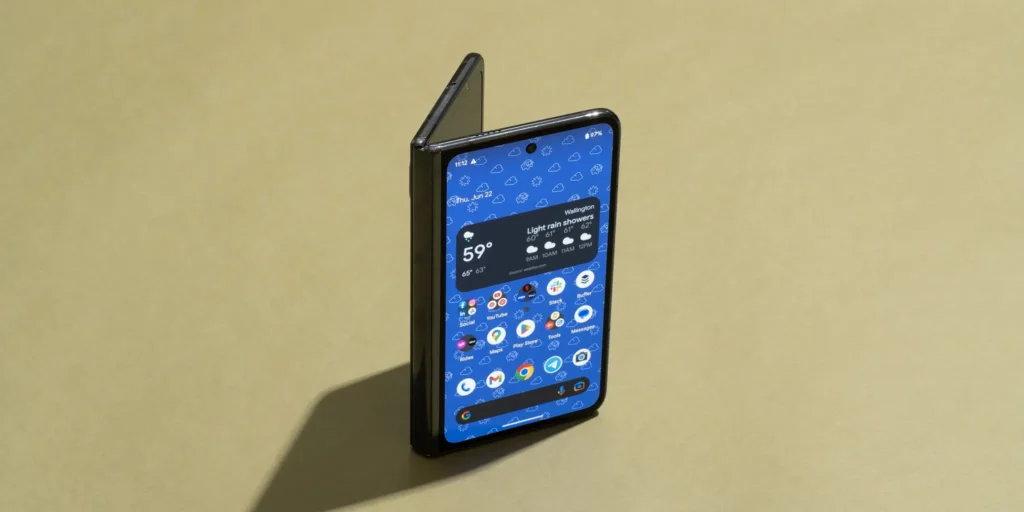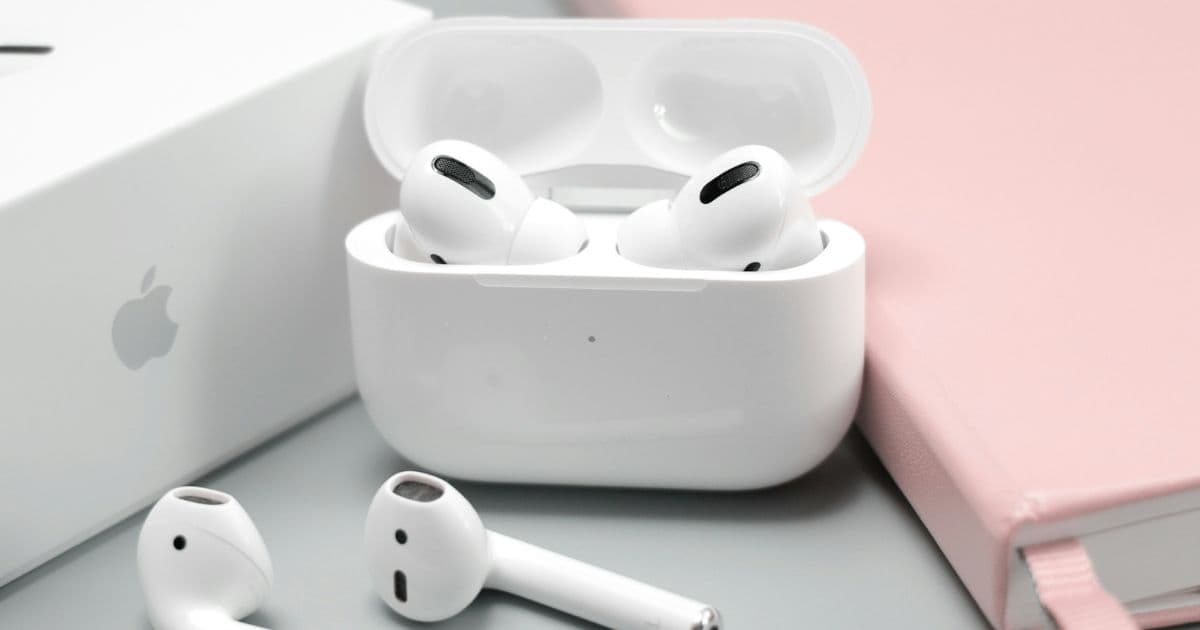
The Pixel Fold is definitely a strange phone, with so many things about it that feel different. Like many others, I’ve been eagerly waiting for a folding Pixel, something that seemed like it was bound to happen eventually, so it feels almost surreal to finally be holding and using it. After a week of testing it, I’ve got a lot of thoughts to share. Let’s dive into the design.
There are a lot of design choices that I really like, especially how it’s been made to be thin and resemble the shape of a passport. When I first got to try it, I remember thinking, “Wow, this could be the best foldable to use when it’s closed,” and honestly, I still stand by that. It’s hands down the easiest and most comfortable foldable to use while closed. But, the open experience? Not as great.
The front screen is 5.8 inches, with curved edges and fairly thin bezels. The whole phone, including the rails and hinge, is made from stainless steel, giving it a premium feel. It’s slightly thicker than most regular phones at around 12 millimeters, but it’s still pretty slim overall. One thing I noticed is that there’s no noticeable gap when it’s closed, which is nice.
I’ve found myself using the outside screen like a regular phone quite a bit, and honestly, it’s the most usable external screen I’ve seen on any foldable. The fingerprint reader, which doubles as the power button, is quick and responsive. The 120 Hz OLED display is bright enough, reaching up to 1,550 nits, so it works well outdoors. It looks great in most conditions. At $1,800, I would expect nothing less, but it’s still impressive. The key takeaway here is that a great foldable should also be great as a regular phone—and the Pixel Fold definitely delivers on that.

So, when you open this phone, things start to get a little weird. First off, it’s not exactly easy to open with one hand. Trust me, I’ve tried—I’ve done this with pretty much every foldable. Some are easier, but this one? Not so much. Once you do get it open, though, you’re greeted with a 7.6-inch folding AMOLED display that’s 120Hz and super bright, peaking at 1,450 nits. The size is pretty great, kind of like the OPPO Find N2 foldable.
Now, here’s where things get interesting. The crease is fairly typical for a foldable—it’s not crazy obvious, but you can definitely see it if you’re looking for it, and you can feel it too. That said, since it’s in the middle of the screen, you don’t usually end up running your fingers over it like you might with a vertical fold. So, it’s not a huge deal, and it tends to disappear when you’re just using the phone.
There’s also been some talk about the phone not fully unfolding to 180 degrees. Personally, I’m not sure if that’s the case. The hinge feels pretty firm, and you can easily fold it to any angle you want, which is great. But when you try to make it totally flat, it looks flat, but if you put it on a table, you’ll notice that the camera bump causes it to rock slightly. It’s just a degree or two shy of being perfectly flat. It’s a bit odd, but you can force it to go completely flat or even a little past that, though it doesn’t feel great to do so.
And about the bezel—yeah, it’s a little bigger at the top and bottom compared to other folding phones. At first, it’s kind of noticeable, but honestly, once you start using the phone, it’s easy to forget about. If you line it up next to a Samsung Fold, it’s obvious the Samsung has a thinner bezel, and it looks pretty sharp. But when you’re actually using the phone, the bezels aren’t that big of a deal. Google actually said this was a deliberate choice. To make the phone as thin as possible, they had to shift some of the hinge components to the top and bottom of the hinge instead of within the Z-axis. So, yeah, you get a little extra bezel, but it also let them fit in a real webcam (or selfie camera) instead of using an under-display one.
I think this is kind of in line with what Google tends to do. The Pixel’s never been about having the most perfect, high-end hardware. They’ve always leaned into their software strengths, and I feel like that’s still the case here. That said, you do get the nice bonus of IPX8 water resistance. I’m also really into the satin finish on the back—it’s great at keeping fingerprints at bay and just looks sleek. Plus, the camera bump doesn’t reach all the way to the edges, which would’ve been tricky with a foldable design, but I think they’ve done a good job of keeping that classic Pixel vibe.
As for performance, it’s surprisingly good. Like, really good. Honestly, it’s the smoothest Pixel I’ve used, even though it’s running the same Tensor G2 chip as the Pixel 7 and 7 Pro. It just feels faster, smoother, and more consistent. Maybe it’s the 12GB of RAM or the 256GB or 512GB of UFS 3.1 storage, but whatever it is, it’s been buttery smooth. I’m happy to say that. Of course, I have to add the usual Pixel disclaimer—it might not stay this way forever. Pixels have a history of aging a bit faster than expected, which stings when you’ve paid this much for a phone. But for now, everything is running great.
The one thing I’m hoping gets better over time is the battery life. It’s been a bit underwhelming during the week I’ve been using it. Normally, the first couple of days of testing don’t really count because I’m still setting things up and getting everything synced. But honestly, since day one, I’ve been seeing about four hours of screen-on time by the end of the day, which is lower than what you’d get from some other flagship phones. The battery is a 4,800 mAh, which is solid for a foldable, but not huge considering how big the inside screen is. There’s a feature called adaptive battery that’s supposed to improve over time based on your usage, but right now, I’d rate the battery life as about a C or C+. I’ve mostly been using the smaller outside screen, so if I were using the larger inside screen more, it probably wouldn’t be much better. So, yeah, battery life isn’t great, but hopefully it gets better.
I want to talk about the software experience because, well, this is a Pixel, after all. And there’s one thing that’s a bit weird. Testing this phone was interesting because Google put in a lot of work on the software, and I was really excited to see how it turned out. Google’s apps now look amazing, with tablet-optimized designs that are really well thought out for a phone this size. On the outside screen, everything looks great. But when you open it up, Google Drive has this cool slide-out sidebar and a multi-column view, Gmail’s new layout is super nice, and the new weather app is awesome. Google Calendar got a complete redesign too. There’s just a lot of great stuff.
Then there’s the new dock that brings it all together. On the Pixel tablet, if you swipe up a little from the bottom, the home bar turns into the home screen dock. This lets you quickly switch between apps or jump into multitasking. Honestly, when I have this giant foldable phone open, it feels like I’m a multitasking pro, just typing away and switching between apps with ease. But here’s the weird part: in my experience, most foldables let you set up the outside screen and inside screen separately—like you can have a whole different layout and widgets on each one. But on this phone, everything’s mirrored.
Right now, my outside screen has three pages: one with app icons and weather, one with a calendar widget, and a third with more apps. When I open the phone, those exact same pages are on the inside. And if I move an app—say, the raindrop icon—from one screen to another, it’ll move on both the outside and inside. Everything stays perfectly synced. Honestly, this isn’t a huge problem, and it probably makes sense for people who want a simpler experience, but I just feel like for a phone this expensive—especially a first-gen foldable—it’d be nice to have more customization options.
It feels a little bit un-Android to me. I can’t be the only one who wants to have different apps on the outside screen and widgets on the inside. Plus, you can’t even stretch a single widget across the middle because the phone treats the inside and outside as two different home screens. It’s all on one big foldable screen, but it’s still kind of separated. I just found that really odd.
Honestly, I really enjoyed using the Pixel Fold. The performance is great, and with all the Google software—Google Assistant, call screening, and everything else—it’s really easy to get past the whole foldable design. But of course, when you think of Pixel, you think cameras too. So let’s talk about that, because there’s definitely some weirdness going on here.
So, there are five cameras on this thing. You’ve got a 9MP hole-punch camera on the front (the outside screen), an 8MP camera on the inside, up in the bezel, and then the three main cameras on the back. The thing is, because the phone is so thin, there just isn’t room for the larger sensors and optics you get on the flagship Pixels. So, they’ve gone with new, smaller components. You’ve got a 48MP main camera, a 10MP ultra-wide, and a 10MP 5x telephoto.

In terms of photos, the Pixel Fold is very similar to the Pixel 7a— and that’s not a bad thing. It still has that classic Pixel style with high contrast, but the quality isn’t quite on the level of the flagships. The images are a bit noisier and the colors feel more muted, especially on the ultra-wide lens. Plus, the smaller sensors take longer to capture light compared to the larger ones on the higher-end Pixels.
If you check out the video I shot on the Pixel Fold, you’ll notice it’s definitely a step down from other flagships. You can see a lot of noise in the darker parts of the frame. But, I will say, it was much easier to shoot with. Since it’s a foldable, I could just unfold it, open the viewfinder, and frame shots with the main camera. So while it’s not going to replace a professional camera, it’s super convenient for casual shooting.
Samsung has faced the same issue with their foldables—the cameras are always a little behind the flagship phones. So, comparing it to other foldables, the Pixel Fold is a step down from the flagship Pixels, but it’s not out of line with what you’d expect from a foldable phone.
You know what’s interesting? This is technically a first-gen device, right? It’s Google’s first attempt at a foldable, and you can definitely tell they’ve learned from other foldables out there. It feels a bit more refined in some ways. They’ve gone with a passport-sized design, kept it slim, and made some smart moves with the hinge, while still keeping the classic Pixel look. For a first-gen device, it’s honestly pretty impressive.
That said, there are still some obvious first-gen issues that make me think, “Maybe the next one will be better.” Like the inside display—it has a visible crease, noticeable bezels, and doesn’t quite fold all the way flat (it’s about 178 degrees). Hopefully, the next version will improve on that. The battery life also isn’t great. Sure, there’s wireless charging, but it could definitely use faster charging since the max is just 30 watts. And the app situation? Some apps just look terrible. Instagram is a mess, Twitter is equally bad, my golf app (18Birdies) isn’t optimized, and even YouTube Studio doesn’t play nice with the big screen. The list goes on. Hopefully, all of that gets fixed with the next version.
Oh, and then there’s the price—$1,800. That’s a huge price tag, so this isn’t a phone that the average person is just going to grab for an upgrade. It’s really for early adopters, tech enthusiasts, and Pixel fans. But, weirdly enough, I actually really enjoy using it. It’s got a nice set of quirks and features that I actually prefer over the regular Pixel. What I love most is how well it’s optimized to be used when it’s closed. I keep saying it’s the best foldable to use in its closed form—it’s just the right balance of strengths and weaknesses, so I end up using it like a normal phone most of the time.
But then, every so often, when I open it up, it’s like a whole new world. It’s kind of a treat, really. I’m really curious to see what happens in the foldable space in the future, especially where the Pixel Fold fits into the market. Right now, it feels pretty niche, but it could definitely carve out its own spot. I’m rooting for it, and I think the next version is going to be amazing.
RELATED POSTS
View all


